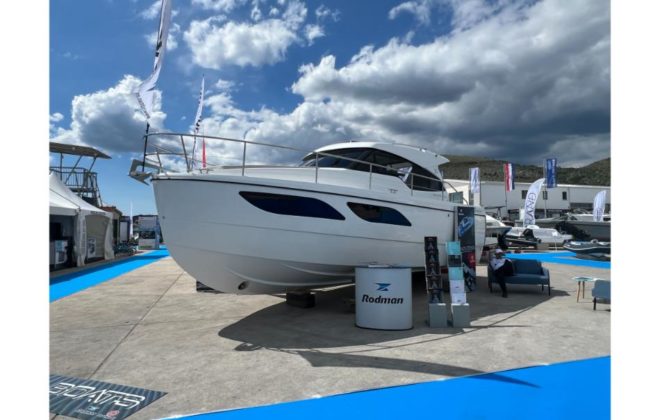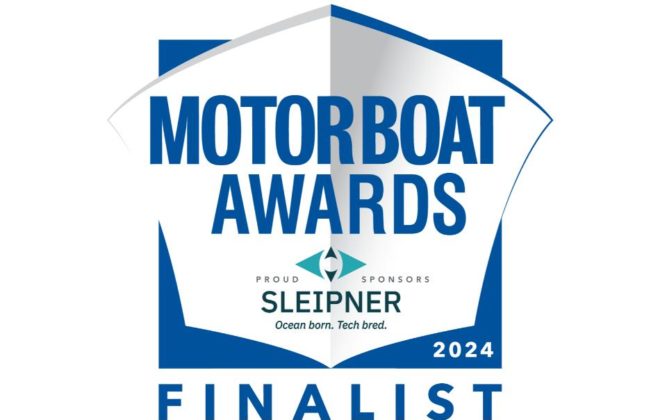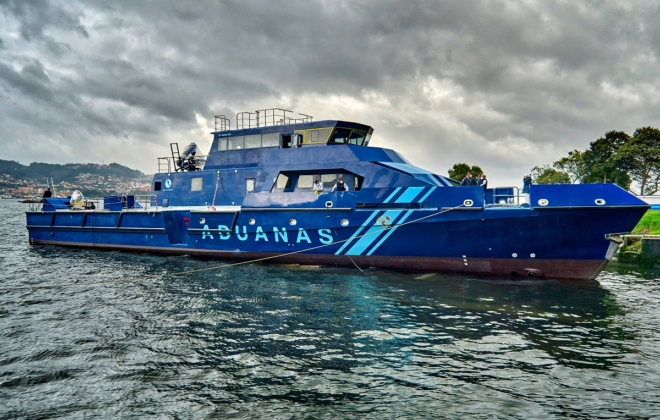RODMAN DELIVERS ITS NEW RODMAN 58, COASTAL OCEANOGRAPHIC RESEARCH VESSEL, TO CIM (MARINE RESEARCH CENTRE) OF THE UNIVERSITY OF VIGO
• This new vessel is the first vessel designed and built by Rodman with hybrid propulsion and 100% electric sailing capability.
• The Rodman 58 is a specially designed vessel for coastal oceanographic research.
• Her construction has been a milestone for the shipyard, enabling it to expand into a new segment, that of electric autonomy boats.
Rodman Polyships S.A.U., the Rodman Group shipyard specialised in the construction of all types of GRP (Glass Fibre Reinforced Polyester) vessels, completes this year with a new delivery in its Professional Boating division. This is the new Rodman 58, a plug-in hybrid propulsion vessel, capable of sailing in electric mode, without the need of using any fossil fuel.
The new Rodman 58, delivered to the Marine Research Centre of the University of Vigo (CIM), will carry out coastal oceanographic research tasks.
The construction of this model represents a milestone for the shipyard, enabling it to implement new technologies and propulsion systems, which will lead to the future development of more sustainable vessels.
Official Delivery Ceremony
The Rodman Polyships facilities in Moaña hosted the official delivery ceremony, which was attended by representatives and members of the research team of the CIM and the University of Vigo, as well as the press.
“At Rodman, we are proud to have built a boat with these characteristics, capable of sailing 100% electrically, at speeds of up to 10 knots and with a range of more than one hour at 5 knots in electric mode. We are certain that this milestone will set a turning point in the construction of this type of vessel, meeting the demand of all those owners who are looking for sustainable solutions and alternatives”, stated Mr. Gonzalo Torres, Commercial Director, also pointing out that “the construction of this vessel for the CIM – University of Vigo, represents an additional satisfaction for Rodman by enabling us to collaborate with one of the institutions of our city that is most involved in the research and development of our oceans and marine resources”.
Rodman 58: Plug-in hybrid propulsion vessel
Main Technical Characteristics:
– Length Overall: 19.20 m
– Extreme Breadth: 5.10 m.
– Draught: 1.40 m.
– Aft Working Deck Surface: 35 m2
– Propulsion Type: Shaft Line
– Fuel Oil Capacity: 2 x 2,400 l.
– Fresh Water Capacity: 1 x 1,000 l.
– Maximum Speed in Diesel Mode: 17 Knots
– Range (12 knots): 823 Miles
– Maximum Speed in Electric Mode: 8 knots.
– Range at 8 knots Electric Mode: 24 minutes.
– Range at 5 knots Electric Mode: 1 hour and 10 minutes.
– Crew (max.): 12 People
– SEVIMAR Classification: III/T
Propulsion System:
The new Rodman 58 is equipped with an innovative hybrid propulsion system, the first of its kind to be installed in Spain:
– Propulsion machinery comprising a BAUDOUIN 6M26.3 diesel engine of 599 Kw (815 HP).
– Hybrid engine with clutch pack and HM3350 TRANSFLUID electric motors powered by LiFePO lithium battery pack.
– Hybrid pack: TRANSFLUID HYBRID MODULE HM3350
– MEE-WOO gearbox, model tk-700 2.59:1
– Power generation and battery charging system using aero generators and solar panels.
This system allows the new vessel to be propelled in three different ways:
– Diesel Mode: traditional navigation with diesel engine. Battery regeneration takes place during navigation in this mode. The electric motors coupled to the clutch operate as alternators to charge the installed battery bank.
– Electric Mode: navigation with the two electric motors as propulsion units. During navigation in this mode, the diesel engine is disengaged and either completely switched off or at idle speed, depending on the chosen configuration. The electric motors switch from regeneration to 100% electric propulsion mode. In this case, the batteries power the electric motors.
– Booster Mode: if necessary, during navigation in diesel mode, more power can be supplied to the propulsion line via the electric motors.
Rodman is constantly improving its designs and manufacturing processes and in this case, we have managed to adapt the propulsion system of the vessel to a more efficient and environmentally friendly system. By selecting this propulsion system, we have managed to minimise the use of fossil fuels, reduce the vessel’s CO2 emissions footprint and reduce noise pollution. At the same time this change would lead to a reduction of Greenhouse Gases. Furthermore, the emission of polluting gases from the vessel is reduced, in accordance with the most demanding national and international regulations, and the possibility of contaminating spills into the environment is reduced.
The completion and final execution of this vessel consolidates Rodman’s position as one of the world leaders in the construction of professional GRP boats. All the professional vessels and leisure boats built by the shipyard are highly valued and recognised by the most demanding owners, as well as by organisations and administrations all over the world.






